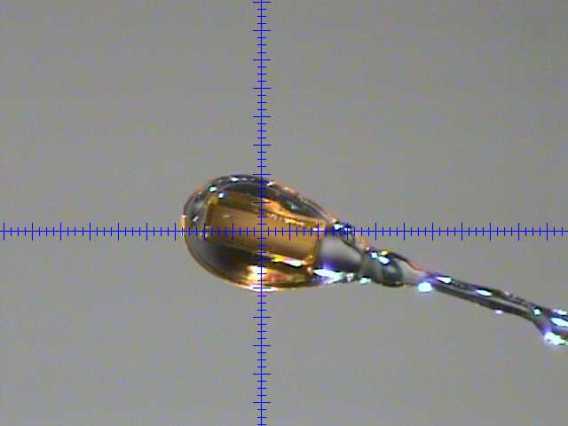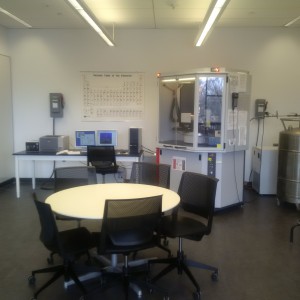The Department of Chemistry at Vassar maintains an APEX2 DUO platform X-ray diffractometer from Bruker Advanced X-ray Solutions. The dual wavelength instrument is equipped with a MonoCap X-ray waveguide that increases the collimated Mo X-ray intensity by a factor of 2.5, an intense Cu IuS microsource, an APEX II charge-couple device (CCD) detector with ten-fold better sensitivity than first generation CCD’s and an Oxford liquid nitrogen cryostream. These features make the instrument useful for a large variety of samples, including tiny, weakly diffracting and air-sensitive materials.
X-ray crystallography at Vassar College is supported by generous instrumentation grants from the U.S. National Science Foundation: NSF-MRI 0521237 (2005) and the American Recovery and Reinvestment Act (ARRA) of 2009 through NSF-RUI 0911324. The facility has also been supported by The Office of the Dean of the Faculty and Department of Chemistry at Vassar College, the Vassar College Committee on Research, the Chemistry Department of Bard College and a gift to Vassar Chemistry Professor Miriam Rossi.
Science faculty members in the Hudson Valley who are interested in using the new instrument to obtain X-ray crystal structures in support of their research should contact Professor Tanski.
Please download our sample information form and send it with your crystals.
Guidelines for using the diffractometer and refining crystal structures:
How to use SQUEEZE – this is old… the latest SQUEEZE comes with instructions on it’s proper use!
This material is a work in progress and is not intended to be definitive.

Bruker APEX2 DUO X-ray diffractometer

Bruker APEX2 DUO X-ray diffractometer
Diffractometer in Bridge 205.
The view out!

Crystal of a Platinum complex synthesized by Professor Craig Anderson at Bard College mounted with oil in a 0.5 mm cryoloop.


